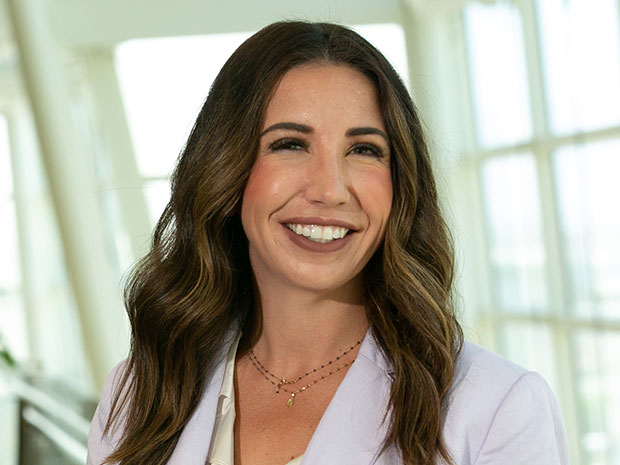Treasury issues updated guidance on the sustainable aviation fuel credit
The Inflation Reduction Act of 2022 (IRA) introduced the SAF excise tax credit under sections 40B and 6426(k) of the Internal Revenue Code (Code). The credit applies to each gallon of SAF sold or used in a qualified fuel mixture between Dec. 31, 2022 and Jan. 1, 2025. The SAF credit is $1.25 per gallon of SAF within a qualified mixture sold or used during the year for SAF with a minimum reduction of 50% in GHG emissions. Additionally, there is a supplemental credit of one cent for each percent the GHG emissions reduction exceeds 50% up to a maximum credit of $1.75 per gallon.
Notice 2024-37 provides additional approved safe harbor methods for calculating the reduction in emissions percentage, including:
- Safe harbor for the 40BSAF-GREET 2024 model
- Safe harbor for certifying the section 40B verification requirement using California Air Resource Board (CARB) Low Carbon Fuel Standards (LCFS) verification
- Safe harbors for reduction in GHG emissions where certain Climate Smart Agriculture practices under the USDA Climate Smart Agriculture Pilot Program were used
Safe harbor for the 40BSAF-GREET 2024 model
To be eligible for the section 40B credit, the sustainable aviation fuel (SAF) must demonstrate a minimum 50% reduction in lifecycle greenhouse gas emissions. The emissions reduction percentage is defined by statute as the percentage by which the lifecycle greenhouse gas emissions of the fuel is reduced compared with petroleum-based jet fuel. This comparison is determined using either the most recent Carbon Offsetting and Reduction Scheme for International Aviation (CORSIA) framework or any similar methodology compliant with the Clean Air Act (CAA) criteria. The Inflation Reduction Act (IRA) requires that an unrelated party certify certain aspects of each methodology.
On April 30, 2024, the Department of Energy (DOE) released the 40BSAF-GREET 2024 model in collaboration with Treasury and other Federal agencies. The Notice provides this model is a similar methodology to the CORSIA model as it evaluates the full fuel lifecycle, including all states of fuel and feedstock production through to the end use of the finished fuel. This model calculates lifecycle greenhouse gas emissions for SAF from two production pathways: hydroprocessed esters and fatty acids (HEFA) and alcohol-to-jet (ATJ-Ethanol). HEFA corresponds to ASTM-approved HEFA-SPK, while ATJ-Ethanol corresponds to ASTM-approved ATJ-SPK.
In a 40BSAF-GREET 2024 User Manual published by the Department of Energy in conjunction with the release of the notice and the 40BSAF-GREET 2024 model, details on the methodology for the model are explained. For example, the model includes specific feedstocks and origins including ethanol sourced from Brazilian sugarcane, U.S. corn dry mill plants with corn oil extraction, soybean oil sourced from the U.S., distillers corn oil sourced from the U.S. and canola/rapeseed oil sourced from the U.S. or Canada. Additionally, in accounting for the source of electricity consumed at SAF and ethanol production facilities, annual energy consumption may be input by using grid electricity consumed (from assigned amounts), electricity supplied to the facility from zero-carbon intensity generators through the purchase of Renewable Electricity Credits or behind the meter electricity supplied and consumed on-site. Additionally, the model takes into account the use of renewable natural gas from landfills, but not from anaerobic digestors. It also takes into account carbon capture and sequestration in determining the GHG emissions. Also of significance, the model provides values for indirect land use change and other indirect emissions categories.
Safe harbor for certifications by CARB LCFS verifiers
For sustainable aviation fuel (SAF) mixtures meeting ASTM D7566 requirements utilizing the 40BSAF-GREET 2024 model to calculate emissions reduction percentages, for verification purposes the notice allows for a certification obtained from a CARB LCFS verifier. The registered SAF producer must document the CARB LCFS Verifier Executive Order number and provide the CARB verifier with the 40BSAF-GREET 2024 model Excel workbook used for calculations. The CARB LCFS verifier will certify the workbook's foreground data and other requirements per CARB practices and standards. Additionally, the registered SAF producer must provide necessary information to assist CARB verifiers, which can be consistent with proposed LCFS Tier 1 calculator Excel workbooks. For the HEFA and ATJ-Ethanol production pathways, specific workbooks should be utilized, or alternatively, a certified or CARB-approved Tier 2 pathway application may be submitted. When filing claims for SAF produced using the 40BSAF-GREET 2024 model, claimants must include a Certificate for SAF Synthetic Blending Component using the 40BSAF-GREET 2024 Model, similar to the Model Certificate provided in Appendix C of notice 2024-37.
Safe harbors for USDA Climate Smart Agriculture Pilot Programs
The notice also provided a safe harbor related to reduced GHG emissions if the farmer producing the feedstock for the SAF uses certain specific farming practices set forth in the USDA Climate Smart Agriculture (CSA) Pilot Program. Treasury, in consultation with the USDA, has determined that a sustainable aviation fuel (SAF) synthetic blending component produced from CSA corn or CSA soybean is eligible for an additional proxy reduction (CSA reduction) in the calculation of the emissions reduction percentage. The emissions reduction percentage is calculated for the SAF credit by subtracting the lifecycle emissions value of the SAF synthetic blending component (LSf) from the baseline for the lifecycle greenhouse gas emissions of petroleum-based jet fuel (LC), dividing the result by LC, and multiplying by 100%. This percentage is rounded down to the nearest whole percent. The IRS will accept a CSA reduction determined under the 40BSAF-GREET 2024 model, provided all requirements of the USDA CSA Pilot Program and the notice are met. The notice provides an example in Section 4.01(3) to assist taxpayers with their calculations.
For the USDA CSA Program, separate certification requirements have been developed by Treasury in consultation with the USDA, as these practices are not part of the 40BSAF-GREET 2024 model or any CARB program, including the LCFS program. Entrants into the CSA Pilot are required to implement three CSA practices; no-till agriculture, cover crops and low-carbon fertilizers for ethanol production. For soybean oil, participants must employ no-till practices and low-carbon fertilizers to qualify for an additional carbon intensity score reduction.
To qualify for the CSA reduction, registered SAF producers using the ATJ-ethanol or HEFA production pathways must obtain unrelated party certification of compliance with the USDA CSA Pilot Program practice requirements (CSA certification) in addition to the CARB certification required. The CSA certifier must audit records from the USDA CSA Pilot Program farmers to verify compliance with the program and audit supply chain records to ensure traceability of CSA crops to the registered SAF producer. Additionally, the CSA certifier must meet accreditation requirements, including accreditation by the ANSI National Accreditation Board (ANAB) for ISO 14065. Furthermore, the certifier must demonstrate agricultural expertise by having at least one individual on the CSA certification team who is either a USDA Technical Service Provider or a Certified Crop Advisor.
Registered SAF producers must contract directly with USDA CSA Pilot Program farmers, collect and maintain certificates for each CSA crop, maintain all required records, and make them available to the CSA certifier and IRS. They must also submit the CSA certification and certificates for Climate Smart Agriculture Crops with their claims.
Certificates for Climate Smart Agriculture Crops must acknowledge potential consequences for fraudulent use, follow a specific format provided in the notice, and include all necessary information. Each certificate must have a unique identification number, and multiple certificates may be provided for one sale.
For claims utilizing the 40BSAF-GREET 2024 model and USDA CSA Pilot Program safe harbors, claimants must submit a Certificate for SAF Synthetic Blending Component using the 40BSAF-GREET 2024 Model and the USDA CSA Pilot Program for Corn and Soybean, following a format provided in Appendix D of the notice.
Registration and eligibility
To qualify for the SAF credit the producer or importer of the SAF synthetic blending component must be registered under the activity letter “SA” with the IRS using Form 637, Application for Registration (For Certain Excise Tax Activities).
Registered SAF producers must notify the IRS of any change in methodology if they will be using the 40BSAF-GREET 2024 model or the 40BSAF-GREET 2024 model with the USDA CSA Pilot Program before making claims for SAF credits or amending prior claims.
Eligibility for using safe harbors provided in the notice to calculate emissions reduction percentage requires compliance with all statutory requirements under section 40B, including registration, traceability, and unrelated party certification. These safe harbors can be used for claims related to the sale or use of a SAF qualified mixture between Dec. 31, 2022, and Jan. 1, 2025.
Claimants using the 40BSAF-GREET 2024 model must submit the Certificate for SAF Synthetic Blending Component using the 40BSAF-GREET 2024 Model with their claim. For cases where the 40BSAF-GREET 2024 model is used with the USDA CSA Pilot Program, the claimant must submit both the Certificate for SAF Synthetic Blending Component using the 40BSAF-GREET 2024 Model and the USDA CSA Pilot Program for Corn and Soybean. Appendices C and D of the notice provide the model certificates for SAF credit claims.
Washington National Tax Takeaways
Notice 2024-37 and the new 40BSAF-GREET 2024 model represents a significant step for providing additional certainty for the emerging SAF market. This welcome guidance was developed by Treasury in coordination with U.S. Department of Agriculture, U.S. Department of Energy, U.S. Environmental Protection Agency and U.S. Department of Transportation, Federal Aviation Administration as part of the Sustainable Aviation Fuels Lifecycle Analysis Interagency Working Group. By developing the 40BSAF-GREET 2024 model and providing a safe harbor for the USDA Climate Smart Agriculture Pilot Program, the government has provided additional methodologies beyond CORSIA for determining GHG emissions related to SAF.
For SAF to receive a tax credit when produced from corn ethanol, producers will need to implement carbon capture and sequestration and all three listed CSA practices on the same acreage (no-till, cover crops, and enhanced efficiency nitrogen fertilizer). For SAF derived from soybeans, producers will need to implement two CSA practices on the same acreage (no-till and cover crop). With respect to carbon capture, the emissions must be sequestered; no reduction in emissions is provided for CO2 utilization. The notice appendix provides details on the CSA requirements, including supply chain tracing, requirements for a contract directly between the farmer and the SAF producer for the feedstock, a certificate to be provided by the farmer, detailed documentation to be maintained by the farmer and SAF producer, as well as third party verifications. These CSA practices must be bundled; no credit will be given unless all required practices are used. While the industry is pleased that the Treasury guidance recognizes a reduction for CSA practices, some concerns have been stated about the requirement that the practices must be bundled for the benefit to apply.
It is important that SAF producers work to register with the IRS before they produce SAF blending component. SAF producers are required to be registered by the IRS. A penalty of $10,000 plus $1,000 per day may be asserted by the IRS if these producers are not registered when required.
Note that while the SAF credit is effective from Jan. 1, 2023, to Dec. 31, 2024, beginning in 2025, the section 45Z clean fuel production credit is set to replace the SAF 40B excise tax credit with a nonrefundable income tax credit to the clean fuel producer (including for SAF). Notice 2024-37 applies only to section 40B credit; however, this guidance is insightful as to how the agencies may be thinking about implementing the section 45Z credit. For example, similar inputs and concepts in the 40BSAF-GREET 2024 model may be incorporated into a 45Z SAF GREET model or emissions table. Additionally, the 40B guidance is the first time that CSA farming practices have been permitted under Treasury clean fuel credit guidance; this welcome adoption may be an indication that similar provisions are being considered and may be adopted by the government for 45Z. Further, the allowance of CARB LCFS verification procedures is insightful as many 45Z commentators have requested incorporation of CARB LCFS aspects for application of 45Z.




